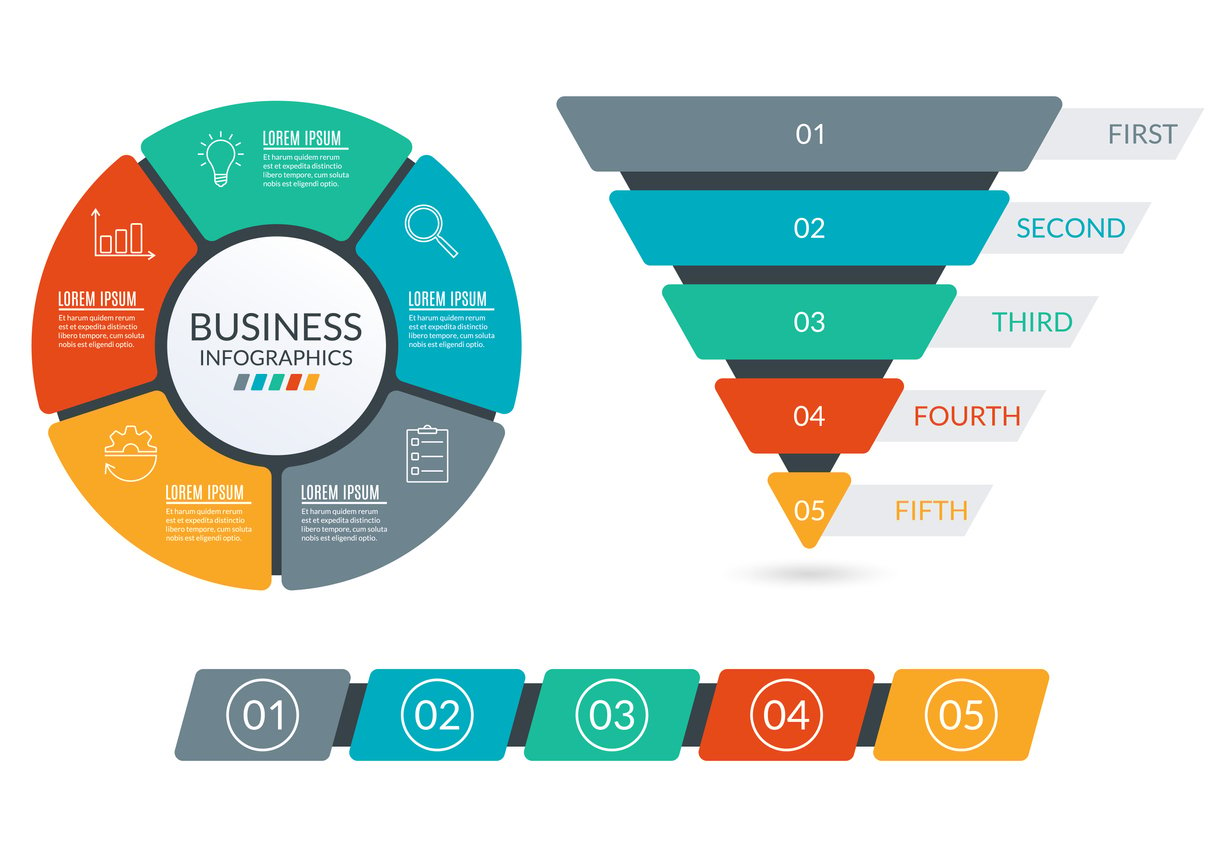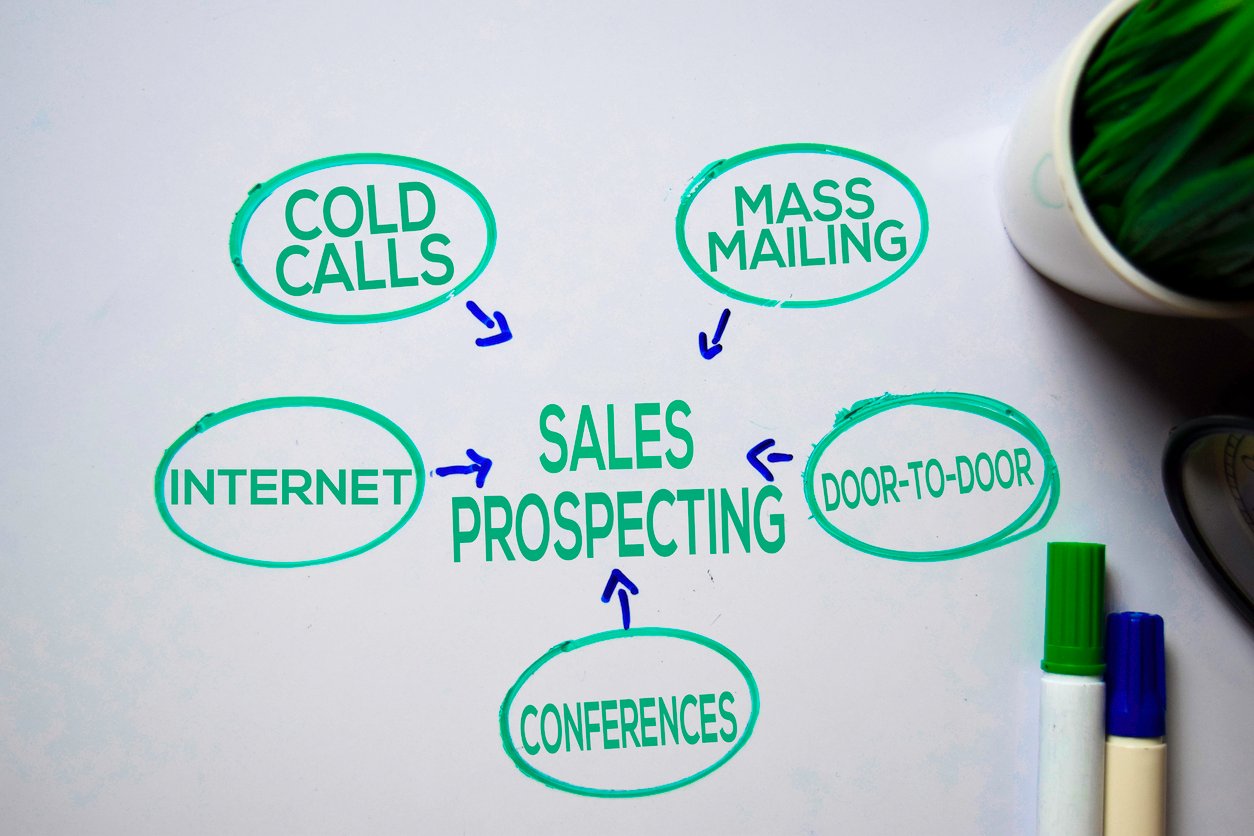
How to Generate Unique Leads with a Lead Generation Campaign
 Updated on
Updated on
 By Carlos Correa
By Carlos Correa
Carlos Correa
Carlos has been involved in the sales space for well over ten years. He began in the insurance space as an individual sales agent, managing teams as s...
learn more
Carlos Correa
Carlos has been involved in the sales space for well over ten years. He began in the insurance space as an individual sales agent, managing teams as s...
Table of Contents
Table of Contents
Running a business is thrilling, but facing a stagnant lead generation campaign can leave you feeling like a lone tumbleweed.
You create fantastic content, but crickets. You run ads but get nothing but more crickets.
The struggle for qualified leads is real, but it doesn't have to be a never-ending chase. A well-crafted lead generation campaign can be the game-changer you need.
From innovative strategies to practical tips, we’ll guide you through the ins and outs of generating unique leads that actually convert. Ready to reel in some valuable prospects? Let's get started.
What Is a Lead Generation Campaign?

A lead generation campaign is a strategic marketing initiative designed to transform complete strangers into potential customers for your business. It's like fishing: you cast a well-crafted message out to a targeted audience, with the goal of reeling in interested prospects who are a perfect fit for what you offer.
These campaigns can take many shapes and sizes, but they all share the same core objective: to gather valuable contact information from individuals who have shown interest in your product or service. This information, often collected through email signups, contest entries, or website downloads, allows you to nurture those leads and eventually convert them into paying customers.
Types of Lead Generation Campaigns

Now that you understand the power of a well-crafted lead generation campaign, let's look at the different ways you can bring them to life. Here are some of the most effective ways to cultivate a thriving community of potential customers:
1. Organic Lead Generation
Organic lead generation focuses on attracting leads through non-paid methods. This approach includes optimizing your website for search engines (SEO), leveraging social media platforms, and creating valuable content that naturally draws in prospects. Organic lead generation is a long-term strategy that builds credibility and trust with your audience, resulting in high-quality leads that are more likely to convert.
2. Content Marketing Campaigns
Content marketing campaigns are crucial in light of the new one-to-one consent law set by the FCC, which will take effect on January 27, 2025. This legislation means that companies can no longer purchase leads from lead-generation companies, making it imperative for businesses to develop their lead-generation strategies through digital marketing.
Content marketing involves creating and sharing valuable content, such as blogs, videos, infographics, and eBooks, to attract and engage your target audience. By offering insights, solving problems, and providing value, you can capture the interest of potential leads and encourage them to share their information with you voluntarily.
Here’s how content marketing campaigns can support your lead-generation efforts:
|
Strategy |
Description |
Benefit |
|
Blog Posts |
Regularly publishing informative articles on your website. |
Drives organic traffic and showcases expertise. |
|
Videos |
Creating engaging and informative video content. |
Appeals to visual learners and increases engagement. |
|
eBooks and Whitepapers |
Offering in-depth guides in exchange for contact information. |
Captures detailed leads through gated content. |
|
Infographics |
Visual representations of data and information. |
Easily shareable and visually appealing, attracting more leads. |
3. Email Marketing Campaigns
Email marketing campaigns are a direct and highly effective way to nurture leads and drive conversions. By sending targeted, personalized emails to your audience, you can keep them engaged with your brand, provide valuable information, and guide them through the sales funnel. Key elements of successful email marketing campaigns include:
- Segmentation: Dividing your email list into specific groups based on demographics, behavior, or interests to deliver more relevant content.
- Personalization: Using the recipient’s name and tailoring the content to their preferences and needs.
- Automated Drip Campaigns: Sending a series of pre-scheduled emails that gradually provide information and build a relationship with the lead.
- A/B Testing: Experimenting with different subject lines, content, and calls to action to determine what resonates best with your audience.
4. Social Media Campaigns
Social media campaigns leverage the vast reach and interactive nature of social platforms to generate leads. These campaigns can be highly targeted, allowing businesses to reach specific demographics with tailored content. Social media lead generation can involve various tactics, including:
- Organic Posts: Sharing valuable content, engaging with followers, and building a community around your brand.
- Paid Ads: Running targeted ad campaigns on platforms like Facebook, LinkedIn, and Instagram to reach a broader audience.
- Contests and Giveaways: Encouraging users to participate in contests or giveaways in exchange for their contact information.
- Live Videos and Webinars: Hosting live sessions or webinars to provide value and interact directly with potential leads.
5. Search Engine Marketing (SEM) Campaigns
While organic search engine optimization (SEO) is a fantastic long-term strategy, sometimes you need a quicker way to get your content in front of a targeted audience. This is where SEM, or search engine marketing, comes in. SEM campaigns involve using paid advertising platforms like Google Ads to place your website or content at the top of search results for relevant keywords.
Key components of SEM campaigns include:
- Pay-Per-Click (PPC) Ads: Paying each time someone clicks on your ad, ensuring you only pay for actual engagement.
- Ad Copy Optimization: Crafting compelling ad copy that attracts clicks and drives conversions.
- Keyword Research: Identifying and bidding on keywords that your target audience is searching for.
- Landing Pages: Creating optimized landing pages that align with your ads and provide a seamless user experience to capture leads effectively.
6. Event Marketing Campaigns
Event marketing campaigns focus on organizing and participating in events to generate leads. These can include webinars, conferences, trade shows, workshops, and other live or virtual events. By engaging directly with potential leads in a dynamic environment, you can build relationships, showcase your expertise, and collect valuable contact information.
Effective event marketing strategies include:
- Hosting Webinars: Offering valuable insights or training sessions to attract attendees and collect their contact details.
- Participating in Trade Shows: Setting up booths and engaging with attendees to generate interest and capture leads.
- Organizing Workshops: Providing hands-on training or interactive sessions to engage potential leads and gather their information.
- Sponsoring Events: Associating your brand with relevant events to increase visibility and attract high-quality leads.
7. Referral and Affiliate Marketing Campaigns
Referral and affiliate marketing campaigns leverage the power of word-of-mouth and partnerships to generate leads. By incentivizing your existing customers or partnering with affiliates, you can expand your reach and attract new leads through trusted recommendations.
Components of successful referral and affiliate marketing campaigns include:
|
Components |
Description |
|
Referral Programs |
Encouraging your customers to refer new leads in exchange for rewards or discounts. |
|
Affiliate Partnerships |
Collaborating with influencers, bloggers, or other businesses to promote your products or services and generate leads through their audience. |
|
Tracking and Analytics |
Monitoring the performance of your referral and affiliate campaigns to identify top performers and optimize your strategies. |
|
Incentives and Rewards |
Offering attractive incentives to both referrers and new leads to motivate participation and increase conversions. |
When you incorporate these diverse types of lead generation campaigns into your overall strategy, you can effectively attract and convert high-quality leads, driving growth and success for your business.
How to Create a Lead Generation Campaign Plan

Crafting a well-defined lead generation campaign plan is essential for maximizing your return on investment (ROI) and attracting qualified leads who are ready to convert. Here are the key steps involved:
1. Define Your Goals and Target Audience
The foundation of any successful lead generation campaign is a clear understanding of your goals and target audience. What do you hope to achieve with your campaign? Do you want to generate more website traffic, increase brand awareness, or capture email signups for nurturing leads? Once you have a handle on your overall goals, you need to get specific about who your ideal customer is.
- Buyer Personas: Develop detailed buyer personas that outline your ideal customer's demographics, behaviors, pain points, and goals. This will help you tailor your message and attract leads who are a perfect fit for your offerings.
2. Choose Your Lead Generation Channels
Based on your target audience and campaign goals, select the lead generation channels that will be most effective for reaching them. Consider the channels your target audience frequents most.
Here's a quick recap of the methods discussed earlier to jog your memory:
- Organic Lead Generation: Content marketing (blogs, ebooks, infographics), email marketing, social media marketing
- Paid Lead Generation: Search engine marketing (SEM), social media advertising
- Other Channels: Event marketing, referral marketing, affiliate marketing
The best approach often involves a combination of these methods to create a well-rounded lead-generation strategy.
3. Craft Compelling Lead Magnets
A lead magnet is a valuable piece of content or incentive you offer in exchange for a prospect's contact information. This could be an ebook, a white paper, a free course, or even a discount on your product or service.
The key to an effective lead magnet is to ensure it directly addresses your target audience's pain points and offers genuine value.
4. Design Landing Pages for Lead Capture
Once you've chosen your lead magnet, create a dedicated landing page specifically designed to capture leads. This page should be clear, concise, and focused on the single goal of converting visitors into leads.
Here are some key elements for a high-converting landing page:
- A compelling headline that speaks directly to your target audience's needs.
- A clear and concise explanation of the value proposition of your lead magnet.
- A strong call to action (CTA) that encourages visitors to sign up.
- A visually appealing and user-friendly design.
5. Craft Engaging Content
Regardless of the lead generation channel you choose, compelling content is key to attracting and engaging your target audience. Develop content that addresses your ideal customer's pain points and provides valuable solutions. This could include blog posts, articles, infographics, videos, or social media content.
6. Promote Your Campaign
Now that you have all the pieces in place, it's time to spread the word! Utilize the channels you selected in step two to promote your lead generation campaign.
Here are some ideas:
- Share your content on social media platforms.
- Run targeted ads on search engines and social media.
- Promote your campaign through email marketing.
- Partner with influencers in your industry.
7. Track and Analyze Your Results
Finally, no lead generation campaign is complete without tracking and analyzing your results.
Once your campaign is launched, it's crucial to track and analyze your results. This will help you identify what's working and what needs improvement.
Use a CRM system and website analytics tools to monitor metrics like website traffic, lead generation rates, and conversion rates. By analyzing this data, you can continuously optimize your campaign for better performance.
By following these steps and continuously refining your approach, you can create lead generation campaigns that are like magnets, attracting high-quality leads who are ready to become your customers.
Lead Generation Examples

It’s clear you now have the tools to build a winning lead generation campaign plan. Let's look at some real-world examples that showcase the power of these strategies:
1. Content Marketing Magnet
A study by Reforge reveals that companies using a defined content marketing strategy see a whopping 30% higher customer growth rate compared to companies that don’t. By consistently creating valuable blog posts, infographics, or ebooks that address your target audience's needs, you establish yourself as a trusted resource and attract potential customers who are actively searching for solutions.
2. Targeted Email Workflows
Based on research, companies excelling at lead nurturing generate 50% more sales-ready leads at a 33% lower cost. Over 35% of surveyed B2B marketers have established a lead nurturing strategy.
Targeted email workflows allow you to personalize your communication and deliver relevant content to leads at different stages of the buyer's journey. This keeps your brand top-of-mind and positions you as the go-to solution when they're ready to buy.
3. Interactive Content Engagement
According to Outgrow, interactive content experiences like quizzes, polls, and calculators can generate up to twice the number of leads and conversions compared to static content formats.
This is because when you engage your audience with interactive content, you capture valuable data about their needs and preferences, allowing you to personalize your marketing efforts and generate higher-quality leads.
4. Social Media Lead Generation Ads
Social media giants LinkedIn and Facebook allow companies to publish targeted content and engage with potential customers in industry groups. By consistently sharing valuable content and participating in relevant conversations, businesses can establish themselves as thought leaders and generate leads through profile visits and connection requests.
Studies show that lead generation through social media can be more cost-effective than traditional methods.
In fact, a study by Lucep shows that lead-generation ads on Facebook can generate an average cost-per-lead of $1.72. Therefore, by leveraging social media advertising, you can reach a wider audience and attract highly qualified leads who are already interested in your industry.
5. Webinar Lead Capture
Webinars are a fantastic way to showcase your expertise and capture leads simultaneously. According to research, 73% of marketing and sales leaders believe webinars are one of the most effective ways to generate high-quality leads.
By offering valuable webinars on topics relevant to your target audience, you can educate potential customers, build trust, and generate qualified leads who are ready to engage further.
6. Gated Content with Email Capture
Many businesses offer exclusive e-books, white papers, or cheat sheets in exchange for email addresses. This gated content strategy allows companies to capture valuable leads while providing potential customers with in-depth information that addresses their specific needs.
These are just a few examples of how effective lead generation campaigns can attract high-quality leads and propel your business forward. In the next section, we'll look into real-world case studies to see how leading brands are implementing these strategies to achieve remarkable results.
Lead Generation Campaign Case Studies

Now that you've seen the power of various lead-generation strategies in action, let's dive into some real-world examples. These case studies will showcase how leading brands are implementing these tactics to achieve impressive results:
1. Airbnb’s Referral Program

While Airbnb's referral program concluded in February 2021, it remains a prime example of how a well-crafted strategy can leverage user incentives, social proof, and valuable data to achieve explosive growth.
At its core, Airbnb's referral program empowered existing users to earn travel credits by inviting friends and family to join the platform. These credits functioned like digital currency, redeemable for future stays or experiences booked through Airbnb. To ensure legitimacy, credits were awarded only after a referred friend completed a qualifying reservation.
Recognizing that mobile devices were a dominant communication channel, Airbnb ensured seamless referral functionalities on their website, iOS app, and Android app. Users could import contacts directly from Gmail and share referral links across various social media platforms. This multi-channel approach maximized convenience and significantly boosted signups and bookings.
A critical factor in the program's success was Airbnb's clear communication of value propositions for both existing and new users. The program's mechanics were straightforward to understand, with a dedicated explainer page outlining all the details.
The $25 travel credit incentive was perceived as valuable by both parties, further fueling user acquisition. Airbnb added an extra layer of reward by offering loyal users an increased credit bonus when referred friends became Airbnb hosts, incentivizing them to expand the platform's supply of rentals.
The Results?
- User Growth: Airbnb achieved a 300% increase in user sign-ups over the campaign period.
- Engagement: Increased user engagement, with referred users being 2x more likely to make a booking.
- Cost Efficiency: The referral program proved to be a cost-effective method for user acquisition, with a lower cost per lead compared to traditional advertising.
By strategically leveraging these elements, Airbnb's referral program became a powerful tool for generating high-quality leads, fostering user growth, and solidifying its position as a travel industry leader.
2. IBM’s Smarter Planet Lead Generation

IBM's "Smarter Planet" campaign wasn't your typical lead generation effort. Launched in 2008, it aimed to position IBM as a thought leader in data-driven solutions for various industries. The campaign centered around creating informative content and thought-provoking discussions about how technology could revolutionize sectors like healthcare, energy, and education.
This approach might seem broad at first glance. However, the brilliance lies in how it indirectly generated leads. Here's how:
- Building Brand Awareness as an Authority: By establishing itself as a champion for intelligent solutions across diverse industries, IBM captured the attention of potential clients. Businesses seeking advancements in areas like city management or food production began to see IBM as a trusted partner with a vast knowledge base.
- Content Marketing Powerhouse: The "Smarter Planet" campaign produced a wealth of high-quality content like podcasts, articles, and white papers. This valuable content not only informed potential customers but also positioned IBM as a reliable resource, subtly nudging prospects toward their solutions.
- Industry-Specific Targeting: The campaign cleverly highlighted nine key industries where IBM's technology could be transformative. This targeted approach resonated with businesses in specific sectors, sparking their interest and subtly guiding them toward IBM's lead generation channels.
The "Smarter Planet" campaign wasn't just about generating immediate leads. It was a long-term strategy for brand building and thought leadership cultivation. By 2011, IBM achieved a 16-year high in revenue, demonstrating the effectiveness of this comprehensive lead generation approach.
While the scale of the "Smarter Planet" campaign might not be feasible for every business, the core principles are valuable for any lead generation effort:
- Thought Leadership Matters: Establish yourself as a trusted authority in your field through valuable content.
- Targeted Content is King: Tailor your content and messaging to resonate with specific industry challenges.
- Long-Term Play: Lead generation is a marathon, not a sprint. Build trust and brand awareness over time.
By implementing these principles alongside the lead generation methods discussed earlier, you can create a campaign that attracts high-quality leads and fuels your business growth.
Conclusion
So, you've seen the power of crafting a strategic lead generation campaign. You've uncovered various methods, from organic content marketing to targeted social media engagement. You've even peeked behind the curtain at real-world case studies that demonstrate the effectiveness of well-planned lead-generation strategies.
The key takeaway? High-quality, targeted content coupled with the right channels is the recipe for attracting qualified leads who are genuinely interested in what you offer.
However, nurturing these leads and converting them into loyal customers requires a robust sales system. This is where a Customer Relationship Management (CRM) platform like Ringy comes in.
Ringy empowers you to streamline your lead generation efforts. By centralizing all your lead data and interactions, Ringy helps you stay organized, track progress seamlessly, and personalize your communication with potential customers.
Ready to transform your lead generation efforts and watch your business flourish? Sign up for a free trial of Ringy today and experience the power of a CRM designed to help you win!

Skyrocket your sales with the CRM that does it all.
Calling? Check. SMS? Check. Automation and AI? Check. Effortlessly keep in touch with your customers and boost your revenue without limits.

Take your sales to new heights with Ringy.
Sales in a slump? Ringy gives you the tools and flexibility you need to capture leads, engage with them, and turn them into customers.
Subscribe to Our Blog
Enter your email to get the latest updates sent straight to your inbox!
Categories
Related Articles




































































































